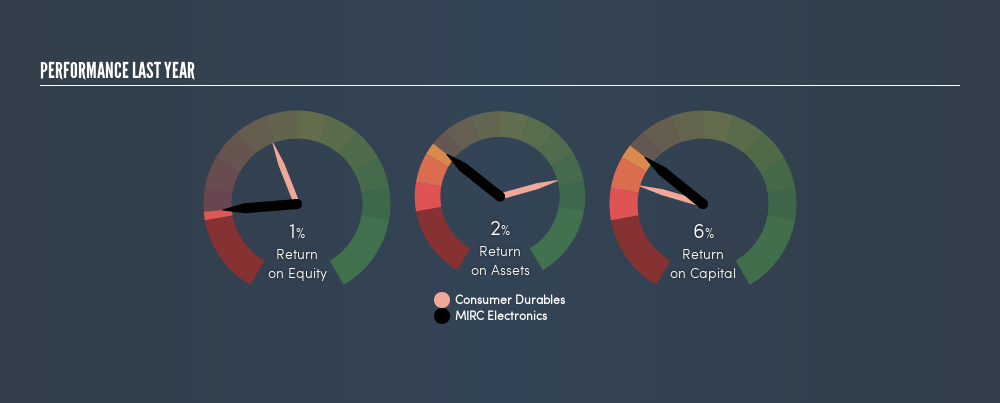Today we are going to look at MIRC Electronics Limited (NSE:MIRCELECTR) to see whether it might be an attractive investment prospect. To be precise, we’ll consider its Return On Capital Employed (ROCE), as that will inform our view of the quality of the business.
First of all, we’ll work out how to calculate ROCE. Second, we’ll look at its ROCE compared to similar companies. Finally, we’ll look at how its current liabilities affect its ROCE.
Table of Contents
ToggleWhat is Return On Capital Employed (ROCE)?
ROCE measures the ‘return’ (pre-tax profit) a company generates from capital employed in its business. Generally speaking a higher ROCE is better. In brief, it is a useful tool, but it is not without drawbacks. Author Edwin Whiting says to be careful when comparing the ROCE of different businesses, since ‘No two businesses are exactly alike.’
How Do You Calculate Return On Capital Employed?
The formula for calculating the return on capital employed is:
Return on Capital Employed = Earnings Before Interest and Tax (EBIT) ÷ (Total Assets – Current Liabilities)
Or for MIRC Electronics:
0.059 = ₹152m ÷ (₹5.0b – ₹2.4b) (Based on the trailing twelve months to December 2018.)
So, MIRC Electronics has an ROCE of 5.9%.
View our latest analysis for MIRC Electronics
Is MIRC Electronics’s ROCE Good?
ROCE is commonly used for comparing the performance of similar businesses. In this analysis, MIRC Electronics’s ROCE appears meaningfully below the 17% average reported by the Consumer Durables industry. This performance is not ideal, as it suggests the company may not be deploying its capital as effectively as some competitors. Independently of how MIRC Electronics compares to its industry, its ROCE in absolute terms is low; especially compared to the ~7.6% available in government bonds. There are potentially more appealing investments elsewhere.
As we can see, MIRC Electronics currently has an ROCE of 5.9% compared to its ROCE 3 years ago, which was 3.1%. This makes us think the business might be improving.

When considering this metric, keep in mind that it is backwards looking, and not necessarily predictive. Companies in cyclical industries can be difficult to understand using ROCE, as returns typically look high during boom times, and low during busts. ROCE is, after all, simply a snap shot of a single year. How cyclical is MIRC Electronics? You can see for yourself by looking at this free graph of past earnings, revenue and cash flow.
How MIRC Electronics’s Current Liabilities Impact Its ROCE
Current liabilities are short term bills and invoices that need to be paid in 12 months or less. Due to the way the ROCE equation works, having large bills due in the near term can make it look as though a company has less capital employed, and thus a higher ROCE than usual. To counteract this, we check if a company has high current liabilities, relative to its total assets.
MIRC Electronics has total liabilities of ₹2.4b and total assets of ₹5.0b. Therefore its current liabilities are equivalent to approximately 48% of its total assets. MIRC Electronics has a medium level of current liabilities (boosting the ROCE somewhat), and a low ROCE.
Our Take On MIRC Electronics’s ROCE
So researching other companies may be a better use of your time. Of course, you might also be able to find a better stock than MIRC Electronics. So you may wish to see this free collection of other companies that have grown earnings strongly.
If you like to buy stocks alongside management, then you might just love this free list of companies. (Hint: insiders have been buying them).
[“source=simplywall”]
| M | T | W | T | F | S | S |
|---|---|---|---|---|---|---|
| 1 | 2 | 3 | 4 | 5 | 6 | |
| 7 | 8 | 9 | 10 | 11 | 12 | 13 |
| 14 | 15 | 16 | 17 | 18 | 19 | 20 |
| 21 | 22 | 23 | 24 | 25 | 26 | 27 |
| 28 | 29 | 30 | 31 | |||




























